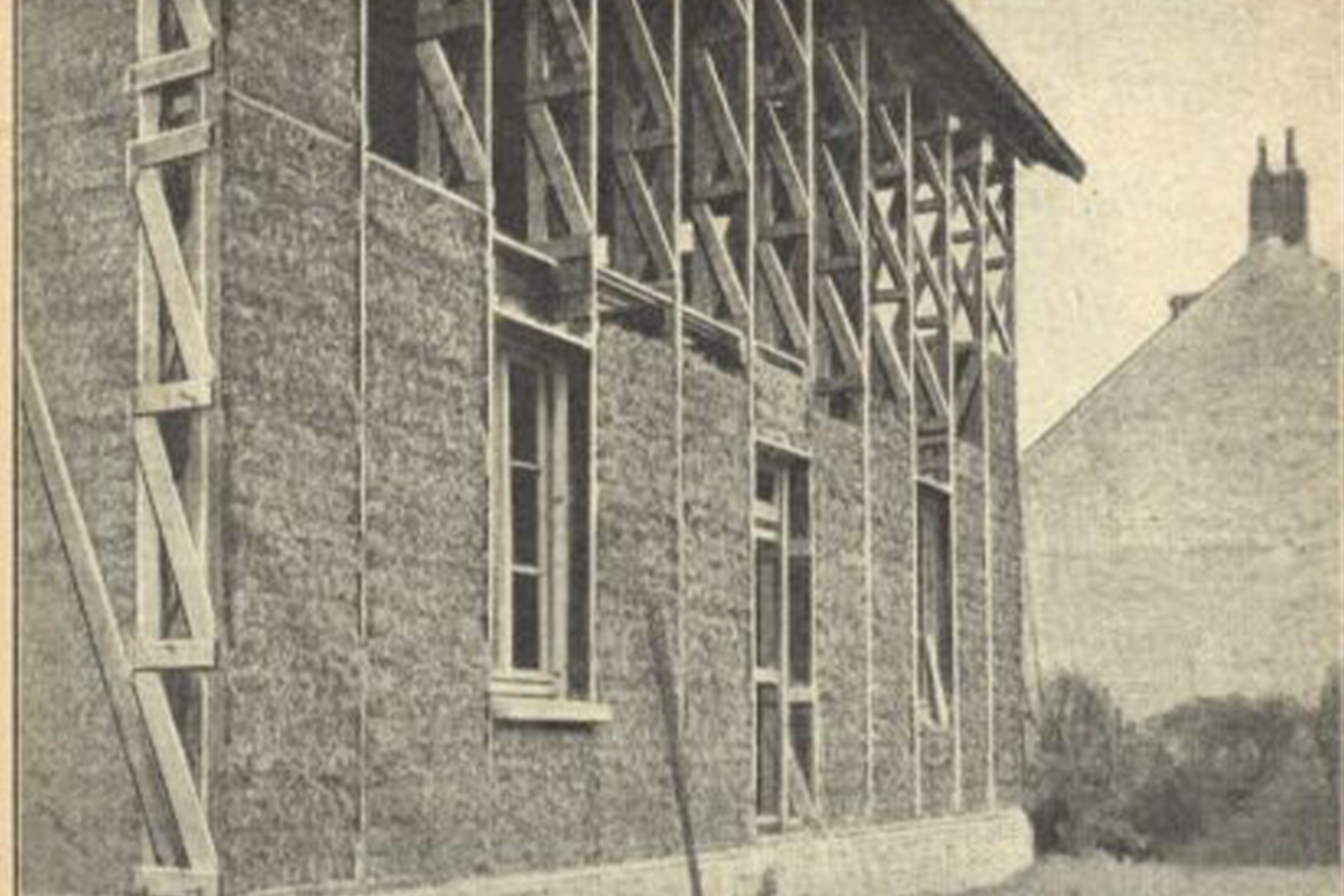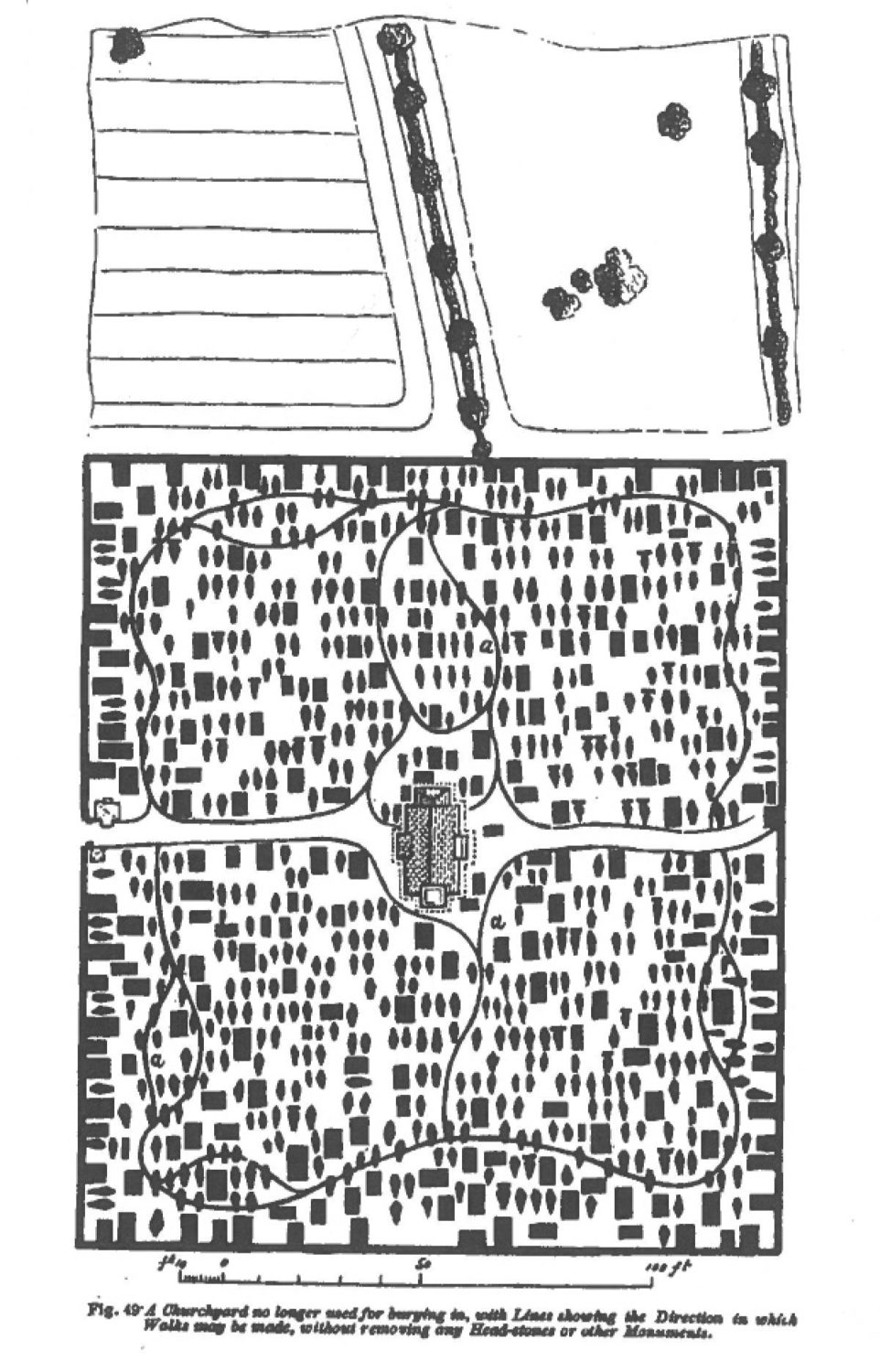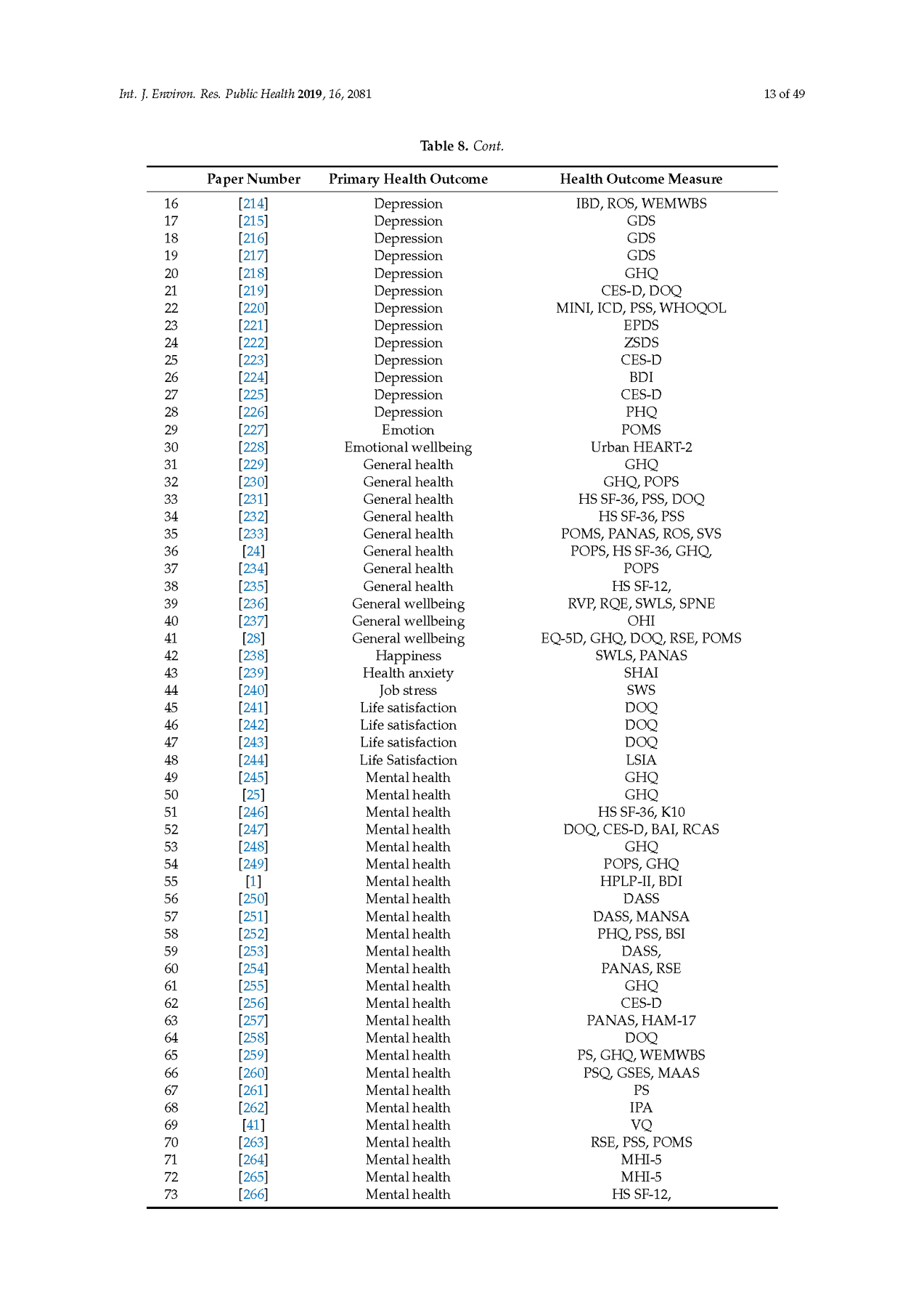An Ode to the Sewer King
Stink on the river,
Choking London’s City Streets
Bazalgette resolved.
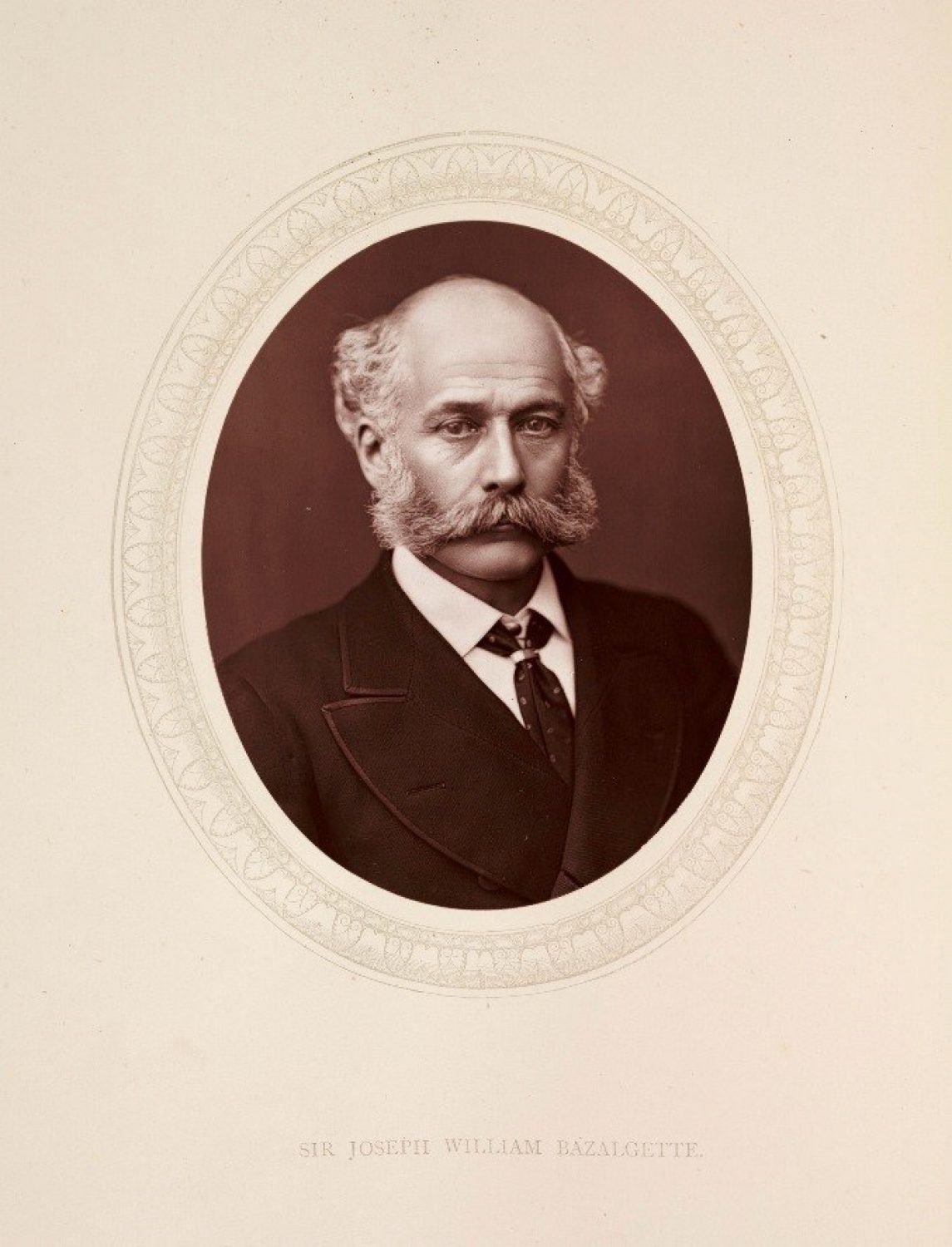
Portrait of Joseph Bazalgette
The Great Stink of 1858 brought the now sprawling metropolis of London to a halt. The population of the city had doubled between the years of 1800-1858 and a lack of planned housing and infrastructure to support the crowded citizenry meant that sewage from increasingly filthy streams, ditches and antiquated drainage pipes all bubbled into the Thames. Sustained hot weather between the months of July & August of 1858 led to vast gaseous clouds rising from the Thames and forming a stinking Miasma that seeped its way into the recently completed Houses of Parliament and across the city. Something needed to be done.
Enter Joseph Bazalgette, a visionary civil engineer revered for his work on landscape drainage and railways across the UK. His proposal for a vast network of subterranean boulevards and tunnels was an engineering undertaking of a scale hitherto unseen and one which advanced the quality of life in London to a greater extent than any that had come before. Complimenting the new serpentine sewers were a series of pumping stations, raised out of the ground like cathedrals of infrastructure. Despite their prosaic function, these pumping stations were elaborate and highly ornamental works of Victorian architecture and engineering and remain functional to this day, serving as landmarks to the legacy of the Sewer King.
When looking at the infrastructure offerings of the Meridian Water development, we harked back to the spirit of Bazalgette and sought to elevate the pumping stations beyond their unromantic functionality, instead creating multifaceted spaces that enrich and animate their surroundings.
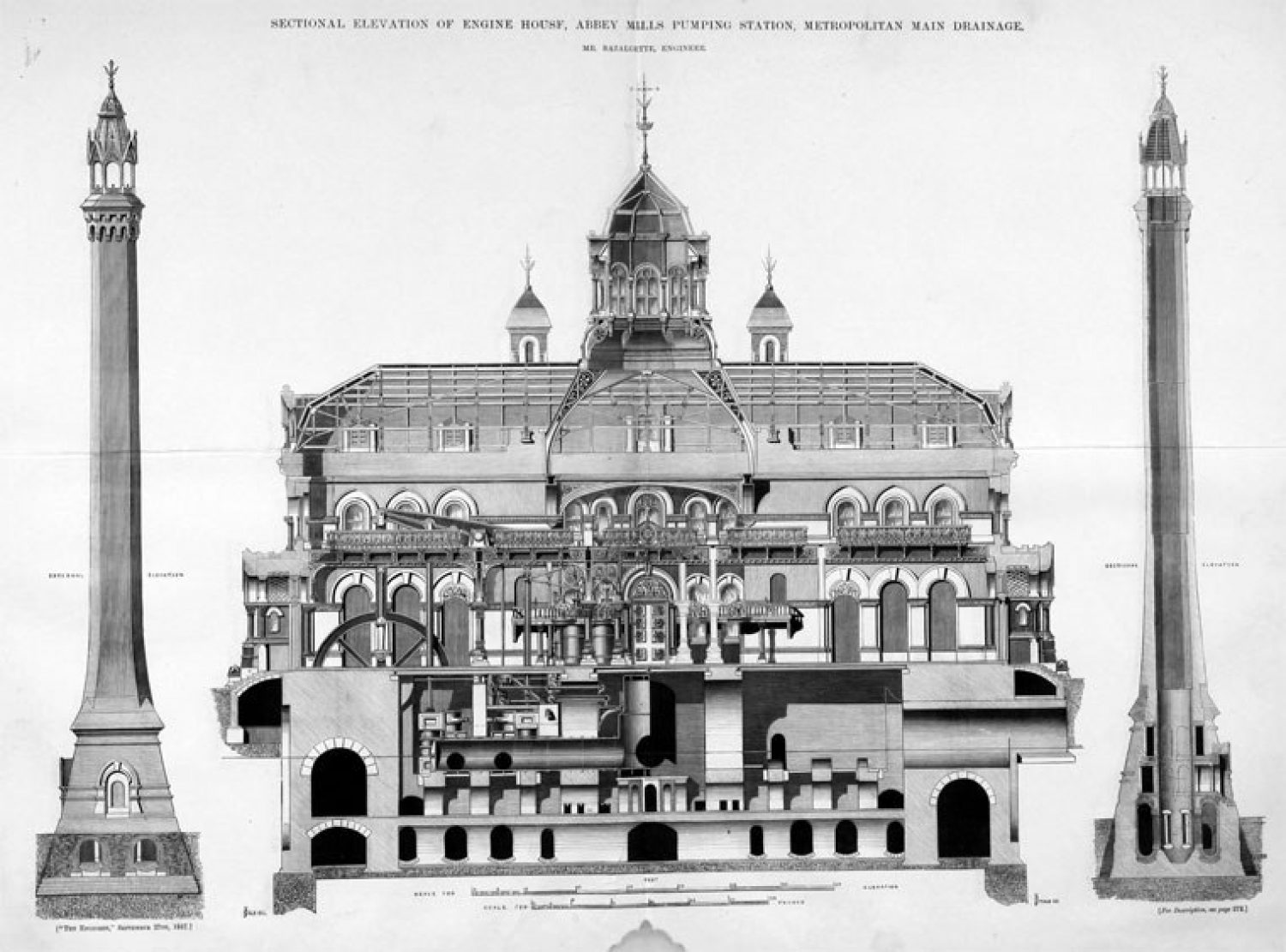
Section drawing of Abbey Mills Pumping Station
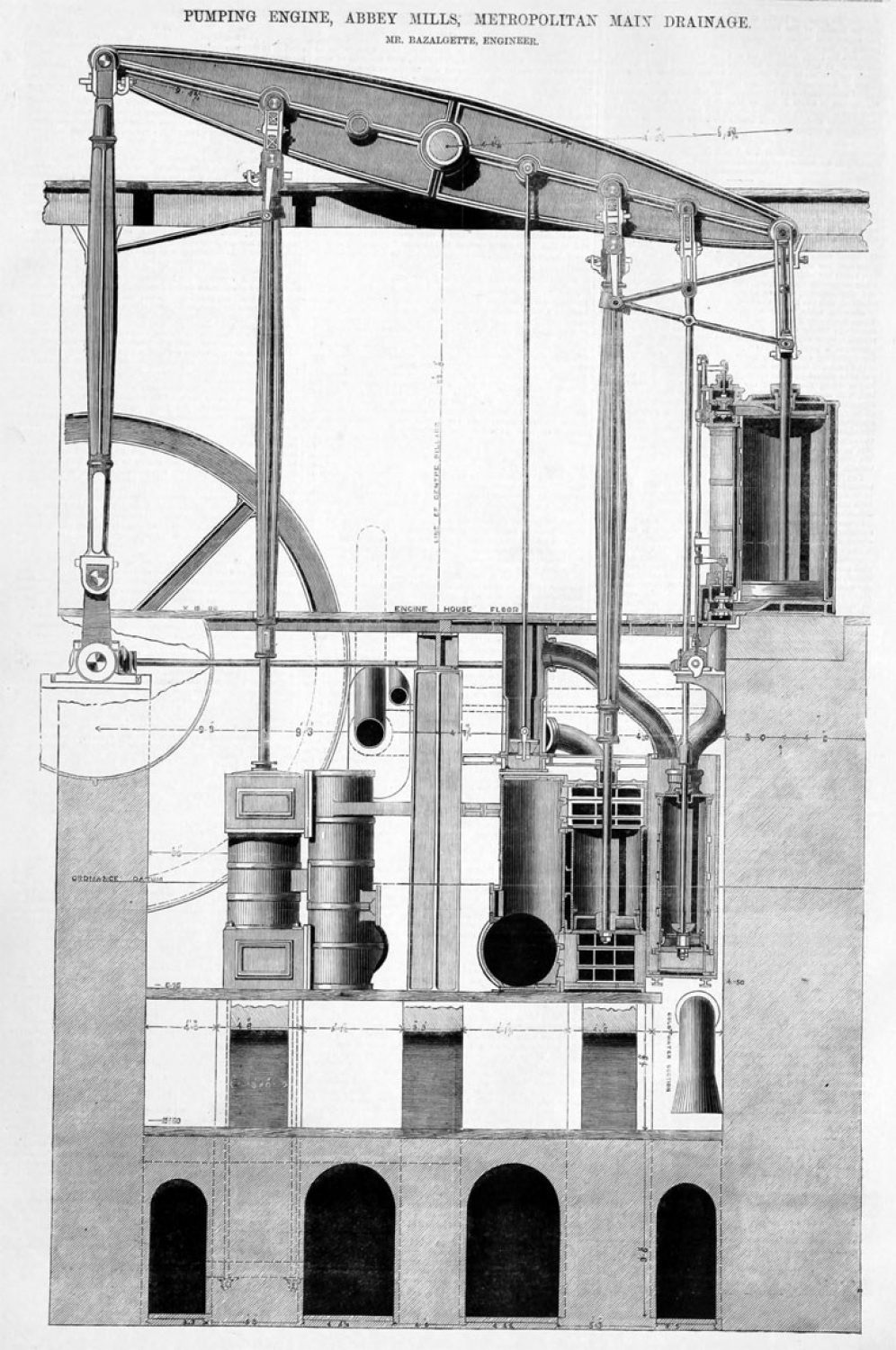
Drawing of the engines at Abbey Mills Pumping Station
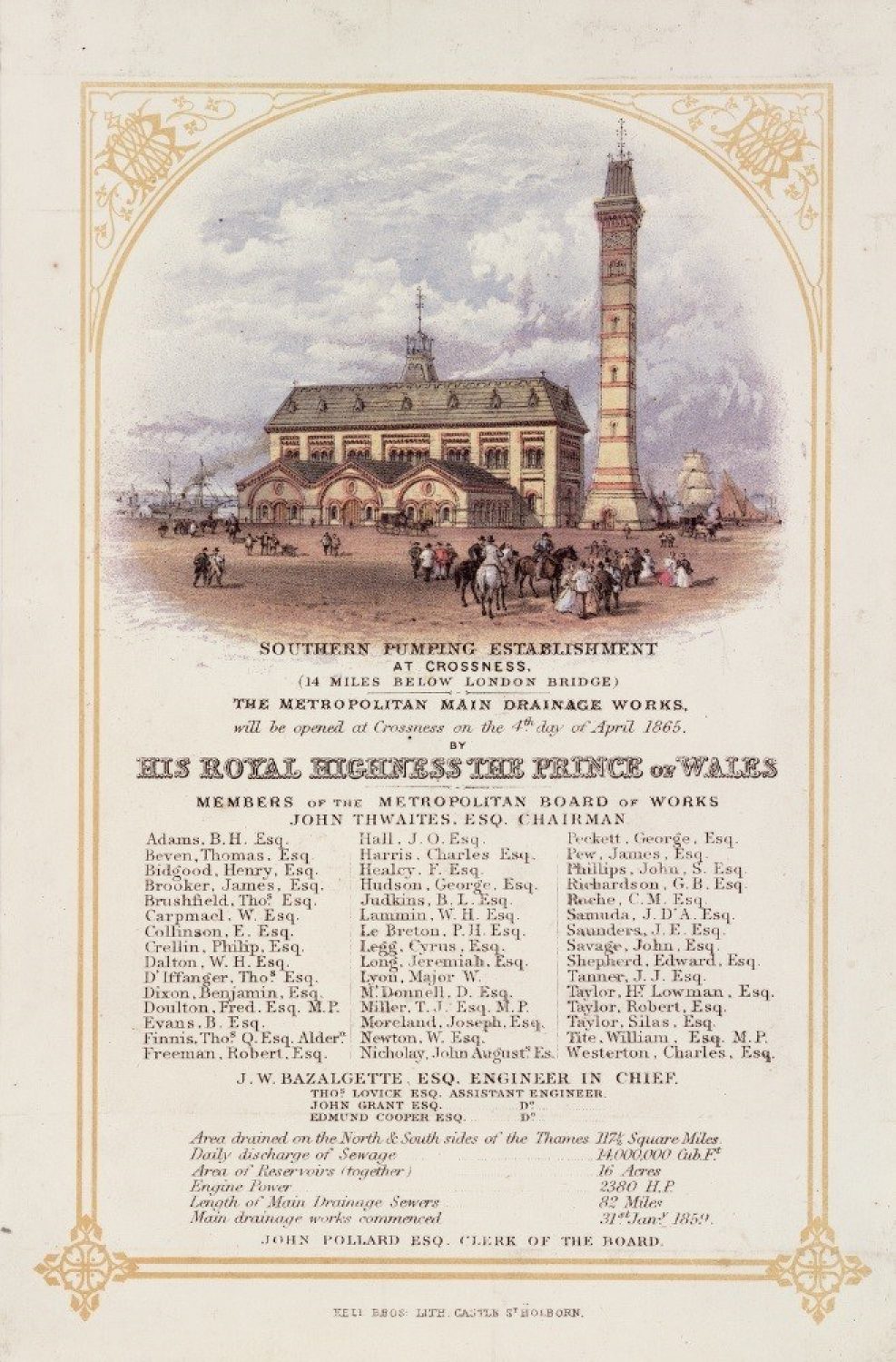
Promotional flyer for the opening of Crossness Pumping Station
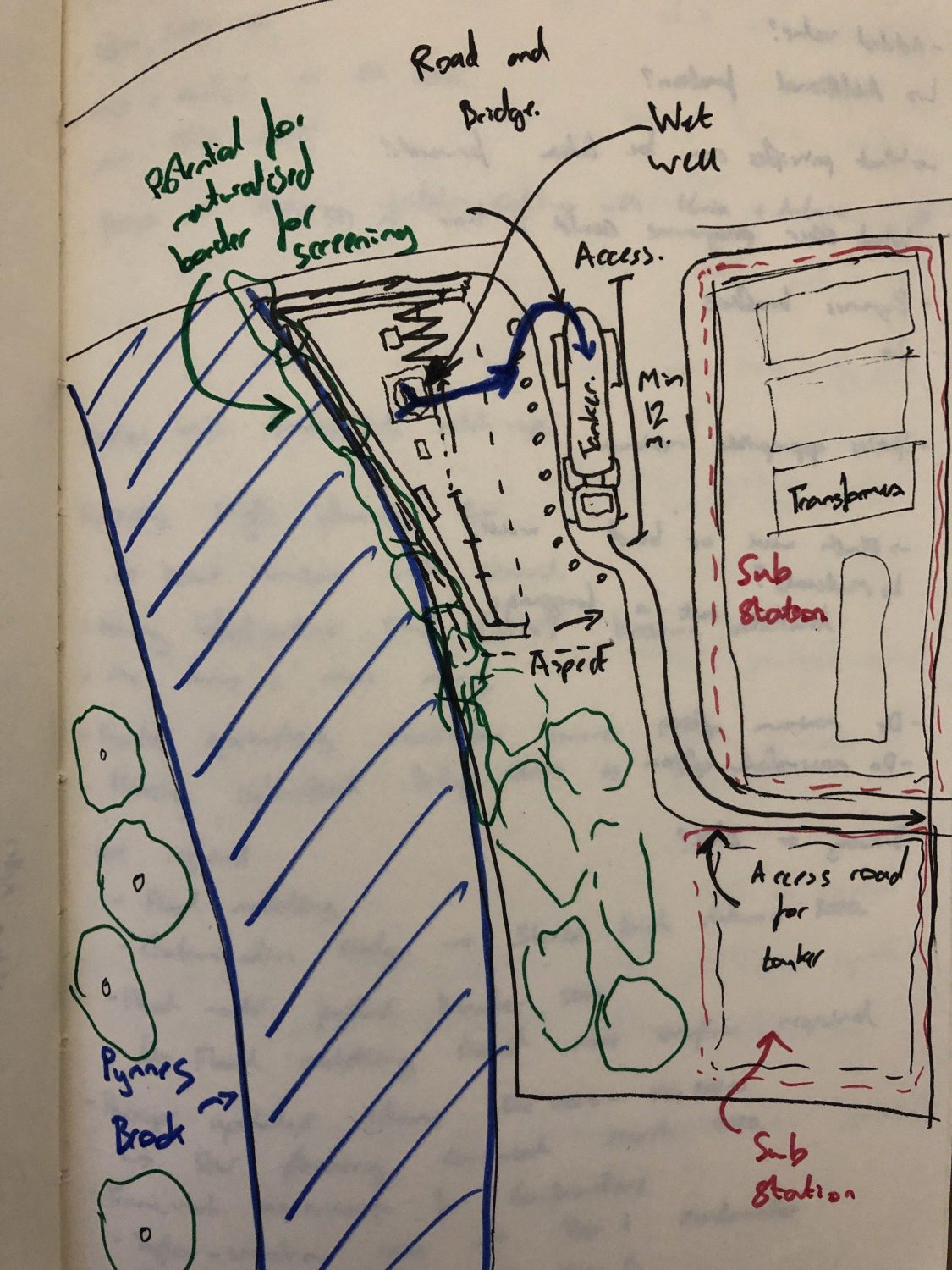
Sketch plan of Meridian Water Pumping Station
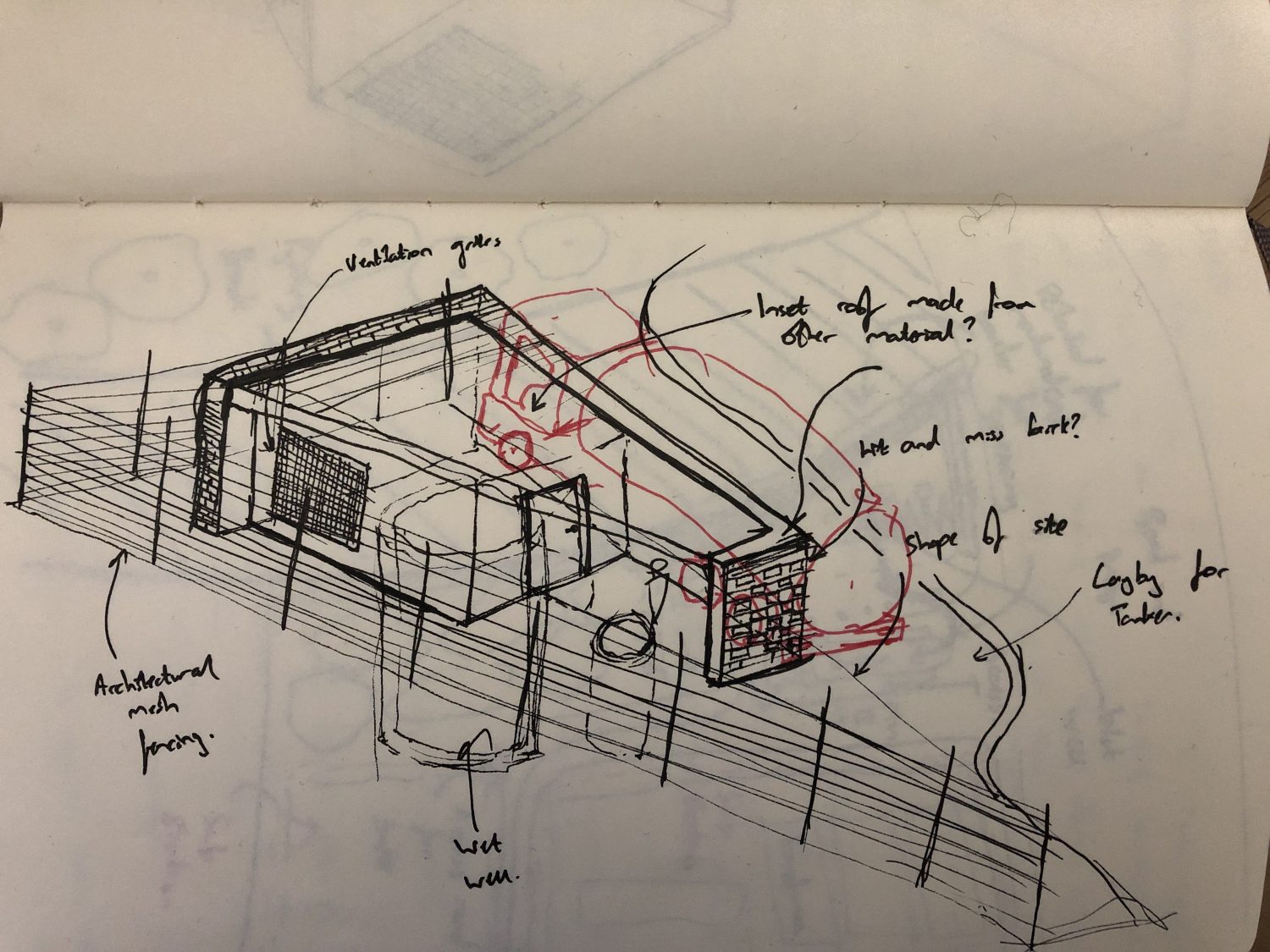
Sketch schematic of Meridian Water Pumping Station
